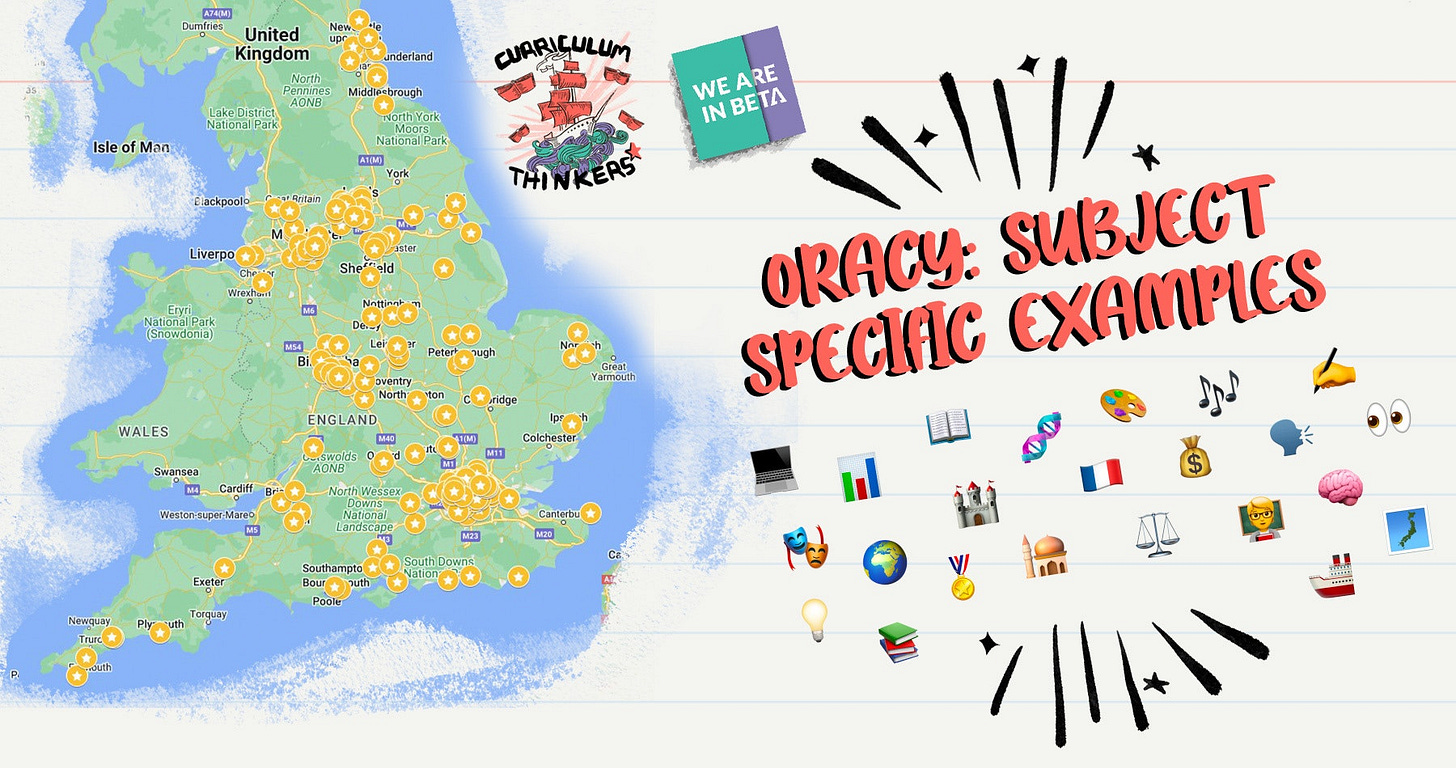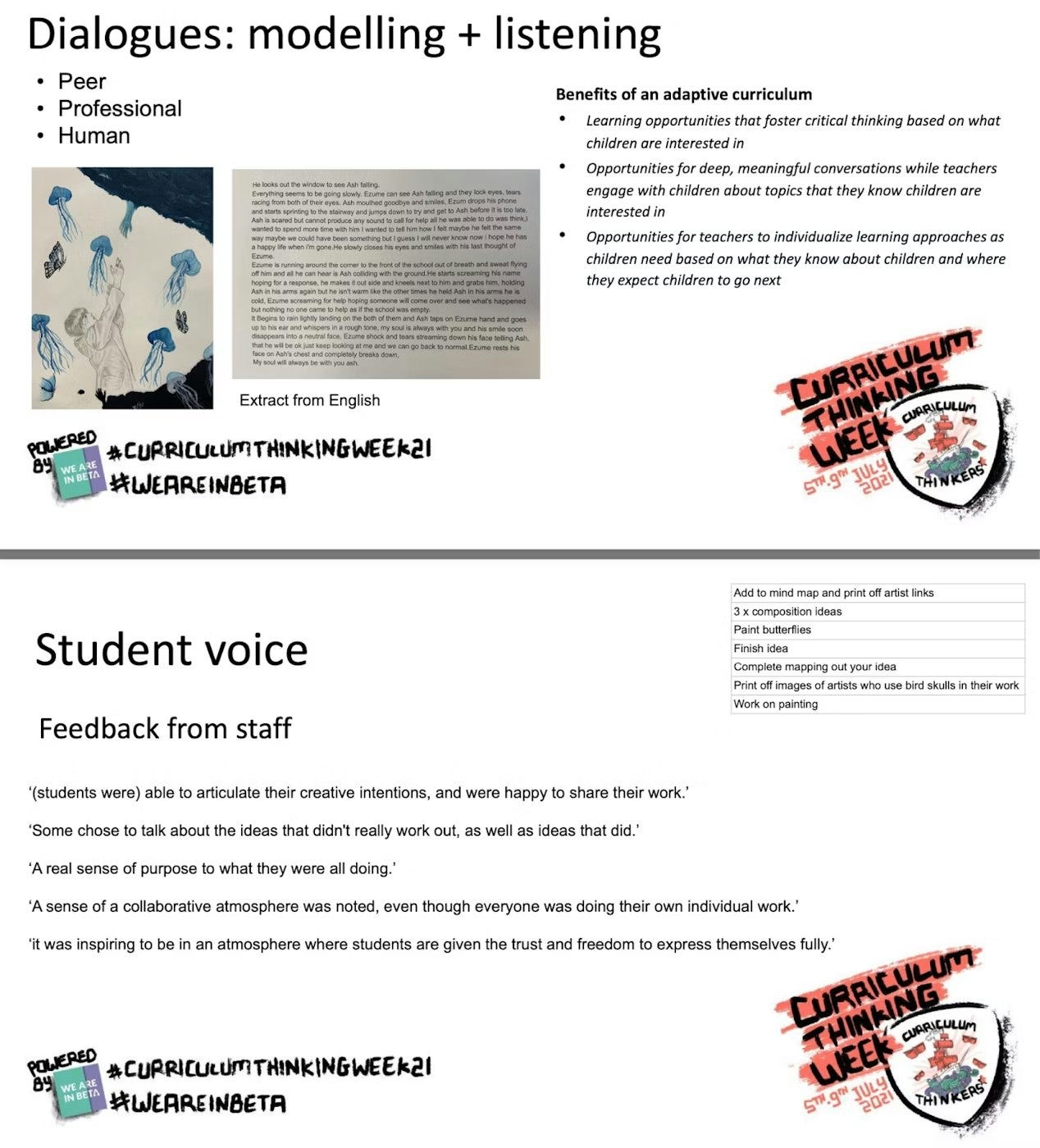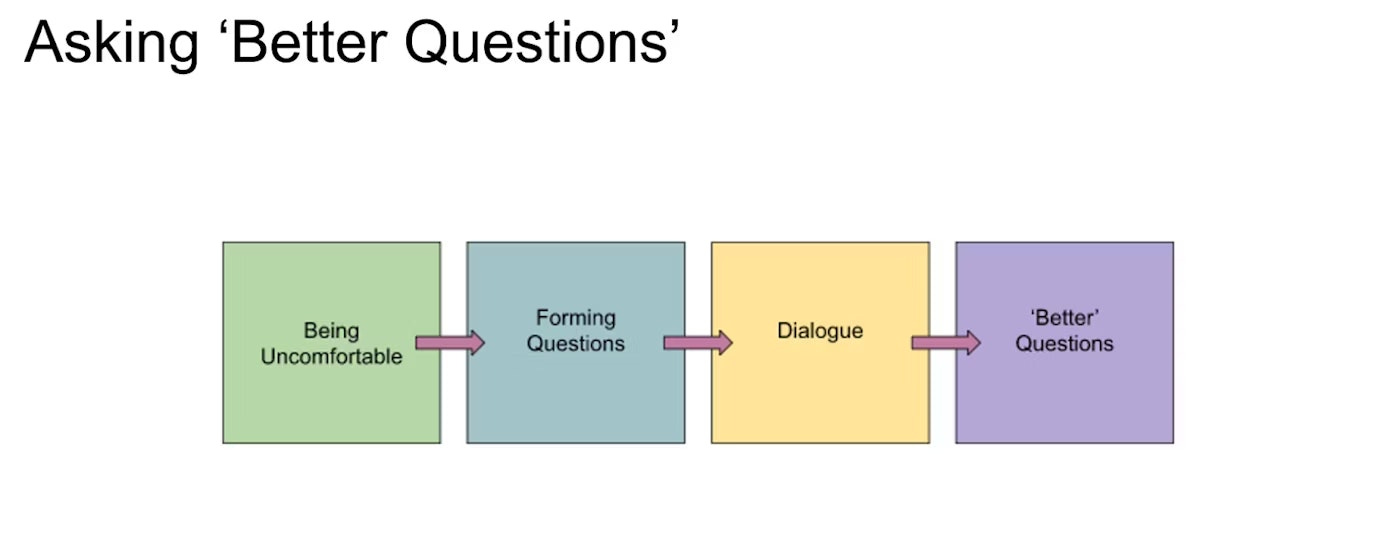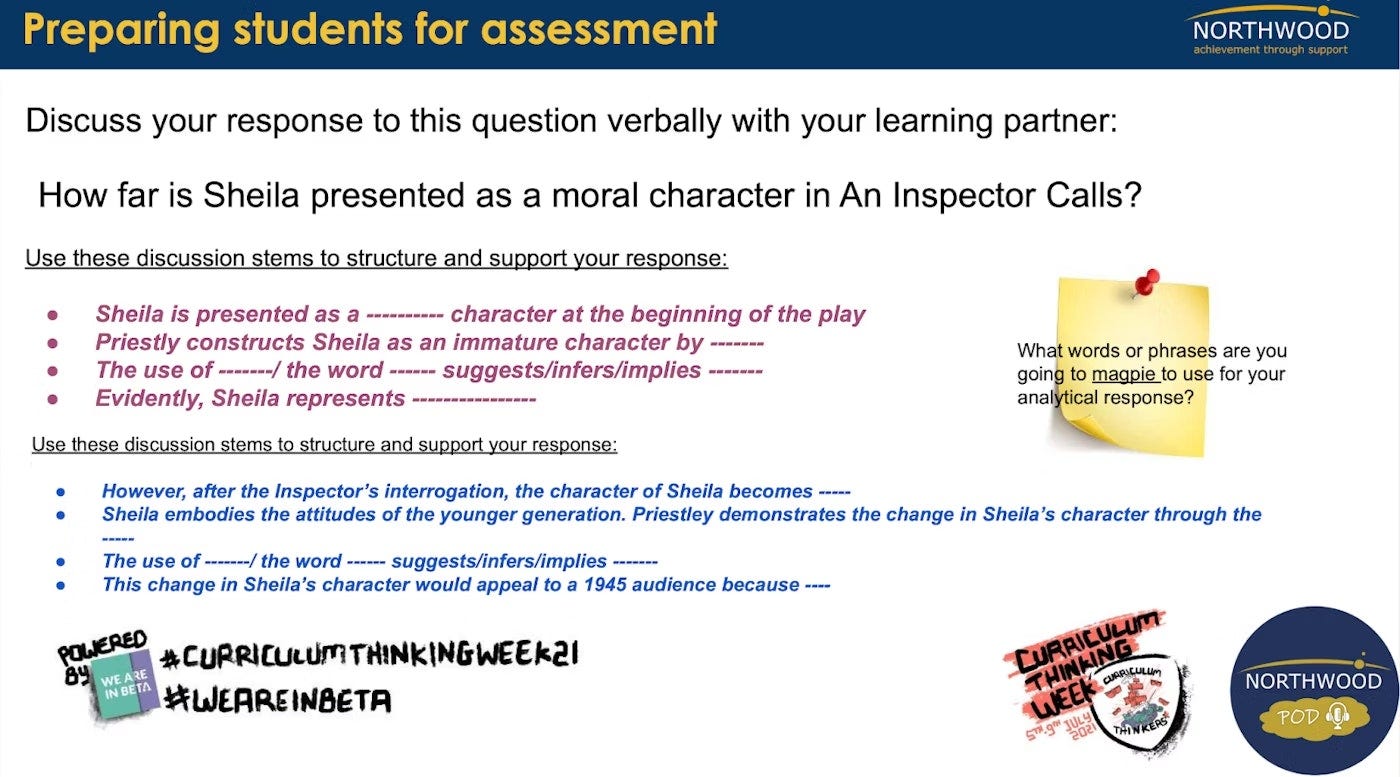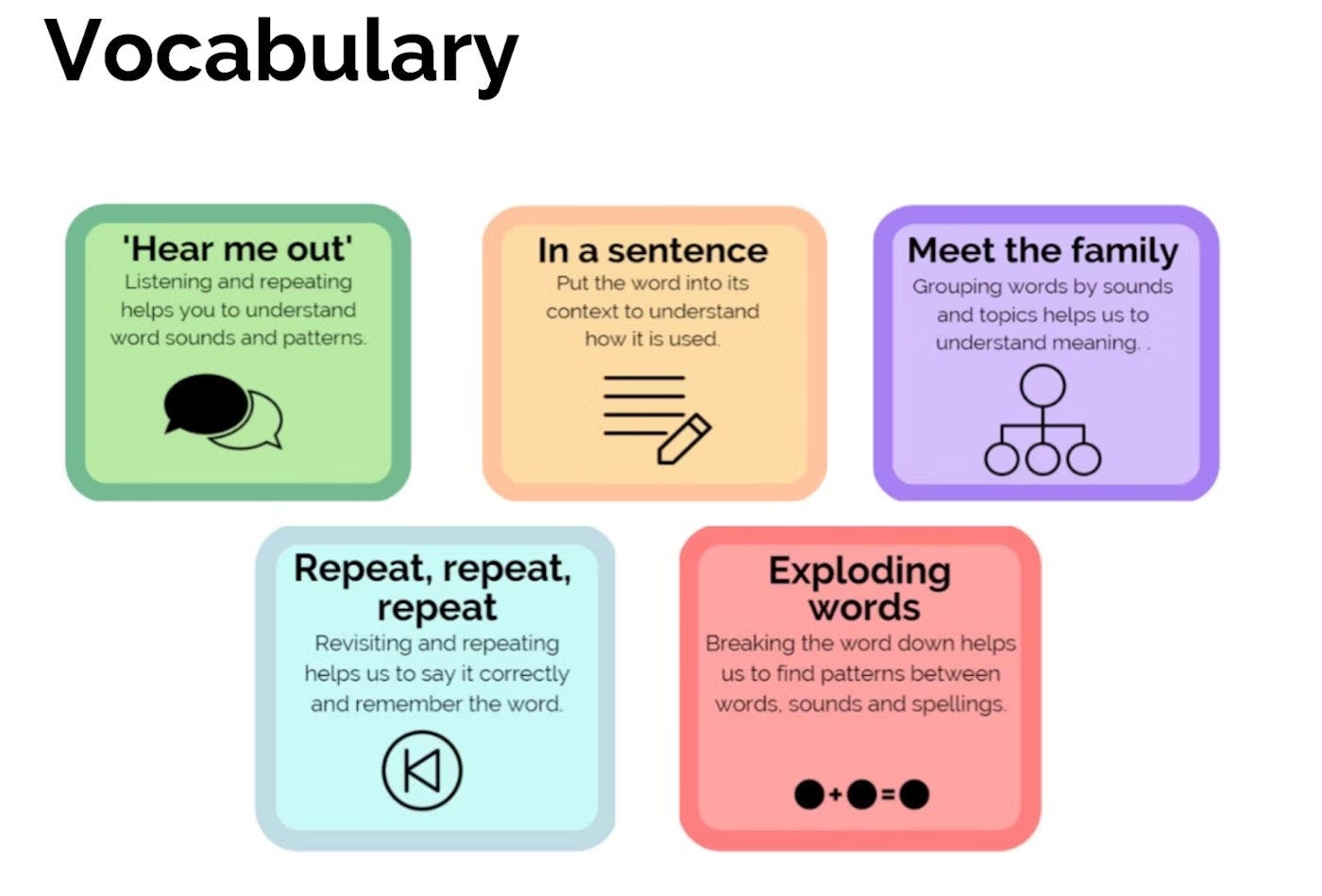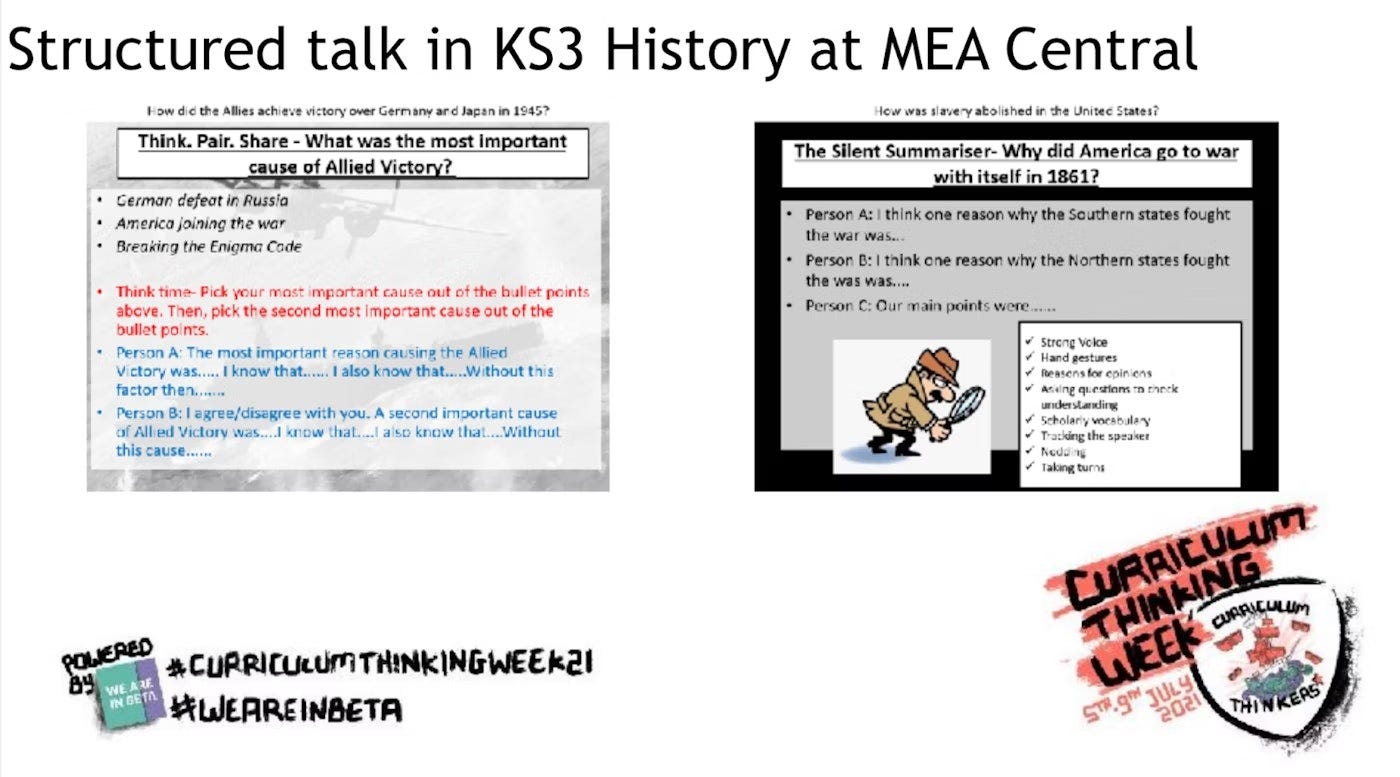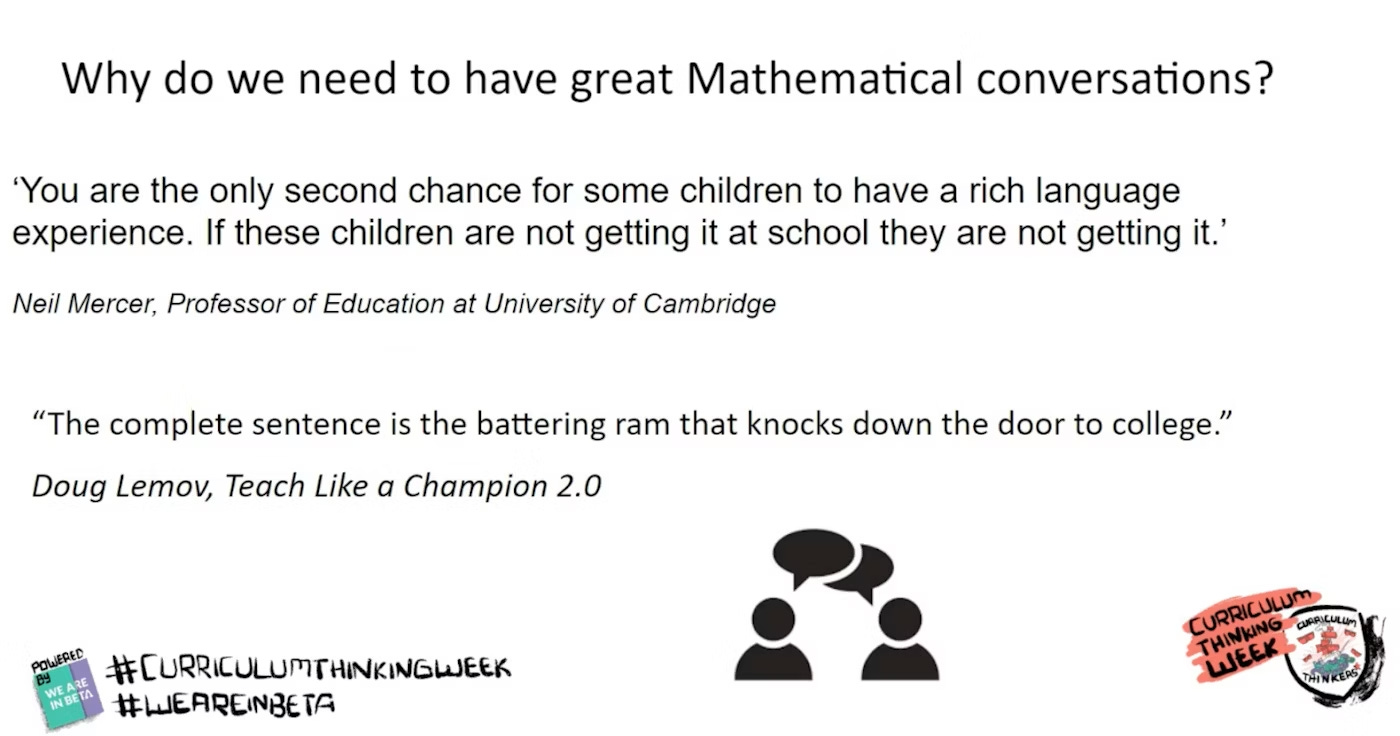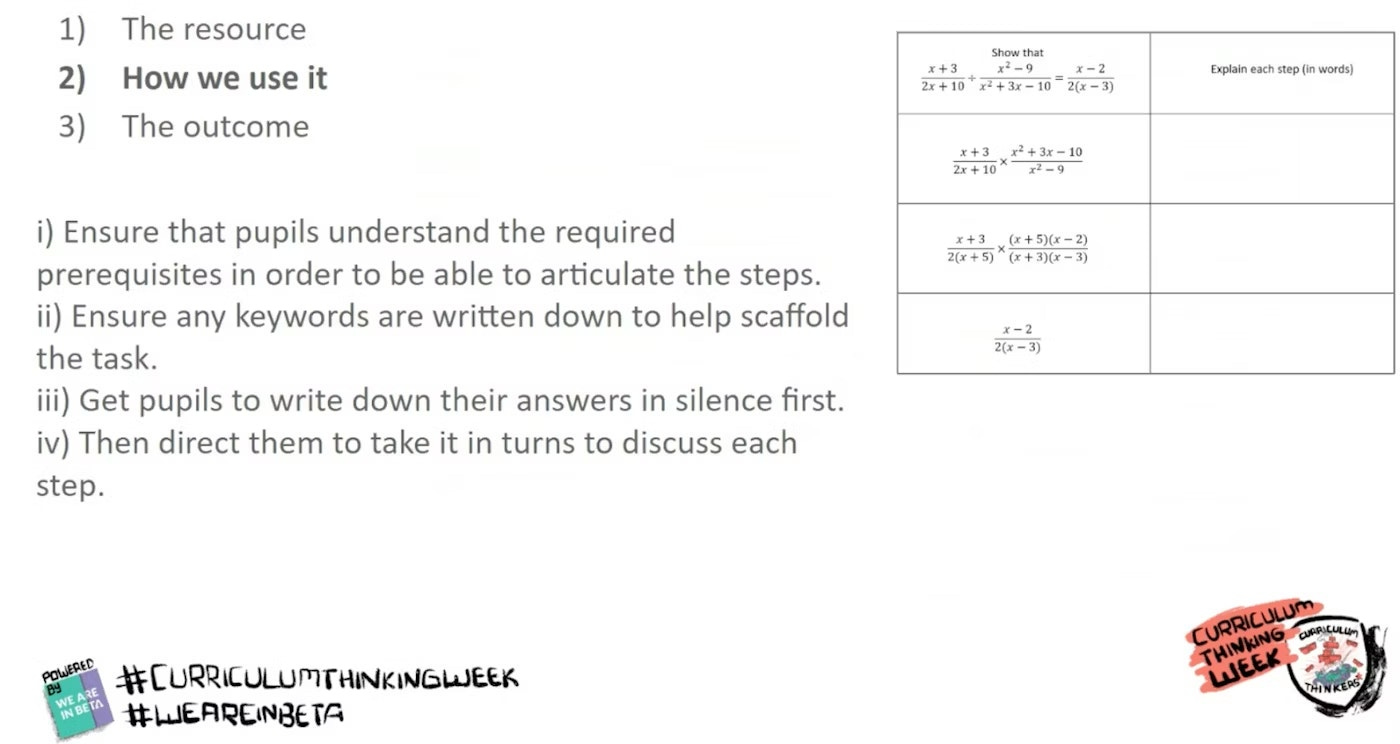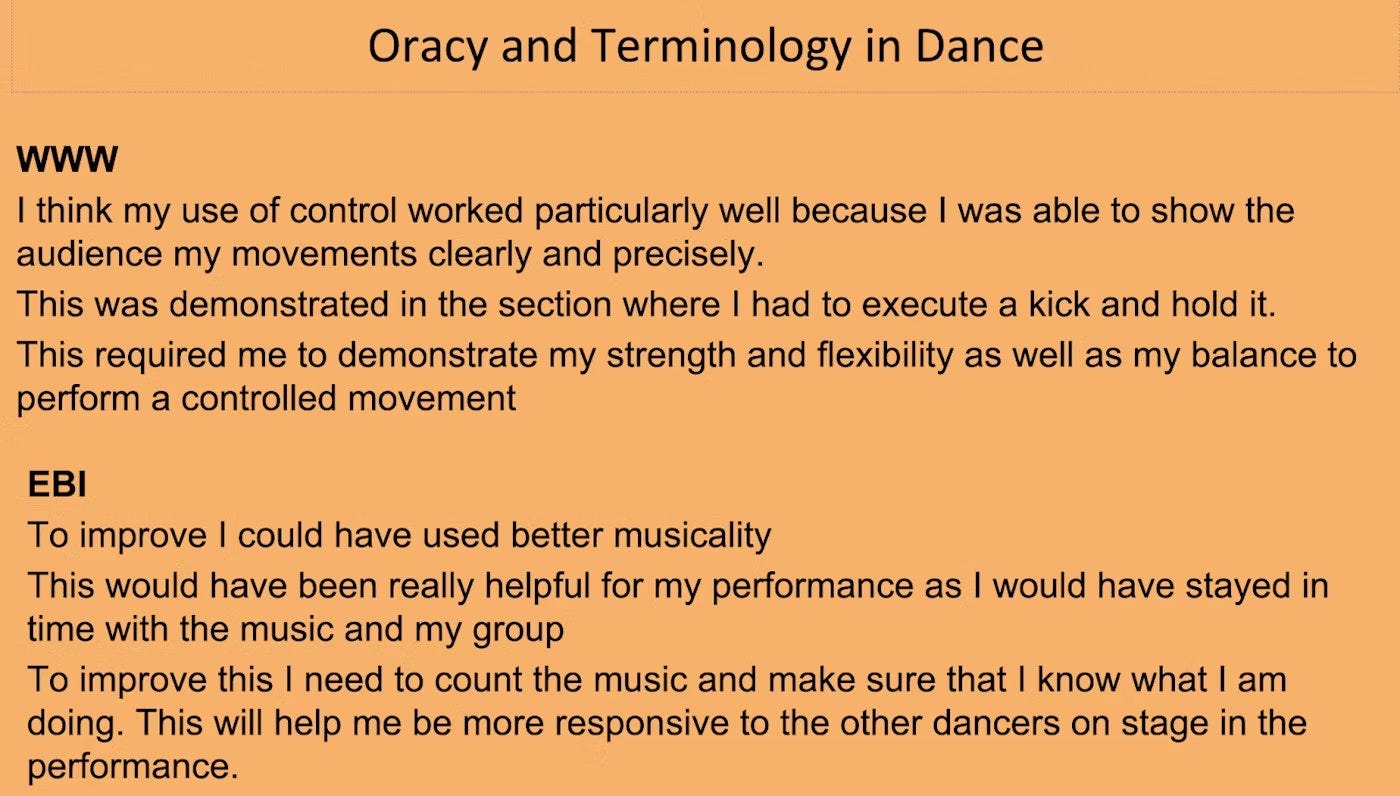Oracy: subject specific examples
This is a guest post by Curriculum Thinkers Community member, Louise Ferrier.
Last week we shared 6 cross-curricular oracy considerations. This week, I explore subject-specific examples of oracy in practice for you to get your teeth into.
Delve in and explore!
Recordings and resources inside the Curriculum Thinkers Community are only available to paying members of the community.
Not a member yet? Get a free trial here.
Already a member and can't access? DM Fiona Flint and ask for your membership activation link :)
Art
The Art department of Harrow Way Community School presented an adaptive and personalised curriculum heavily hinged on oracy to support thinking. Thinking and making sense of creative ideas are explored through dialogue between students peer to peer and with their teacher. Students at KS4 are encouraged to follow their own creative path with the confidence they develop. Integral to encouraging students to find their voice is the teacher modelling the metacognitive process using prior student example work.
Watch the presentation here. Thank you Chrissy Collins for sharing.
Also on the theme of the power of dialogue to refine and develop understanding, Peter Corkish of the Dorcan Academy shares a fascinating presentation on dialogic learning in art. With the goal of producing more inquisitive students, they set out to formulate dialogue that was grouped according to the learner’s thinking after they had been encouraged to formulate critical analysis questions.
Watch the webinar here. Thank you Peter Corkish for sharing.
English
While English may be seen as the natural bedfellow of oracy, the example I have chosen specifically explores the link between oracy and writing. Northwood School’s English department uses the James Britton quotation “Reading and writing float on a sea of talk” in their webinar. This embodies that understanding of oracy as a tool for developing deeper thinking, oral rehearsal of writing, and the refinement of thought.
They are using explicit scaffolds to support talk which they call ‘discussion stems’. By scaffolding the talk they are increasing the ambitious vocabulary by experimenting through talk before writing and using developed discussion stems to springboard into deeper thinking before putting pen to paper.
Watch the webinar here. Thank you Fionnuala Hosty for sharing.
Geography
A key aspect of oracy is providing the vocabulary for students to experiment with. The Geography department of Southfield School has an explicit bank of strategies for teaching key vocabulary which is then used in talk and writing. Particularly notable is the deliberate linking of words etymologically, helping students to eventually decipher language more independently.
You can explore the presentation and resources here. Thank you Phill Monk for sharing.
Languages
As speaking is a linchpin of the Languages’ curriculum it is not surprising that oracy skills are an essential part of pedagogical decision making.
At Kings Academy Binfield, the MfL department’s evidence-informed approach has a carefully constructed approach to questioning that requires oral participation from students while oracy becomes integral to the process of retrieval and deliberate practice. For example, when a student is unable to answer a question, they are asked to repeat the correct answer and then are returned to later in the lesson to retrieve the answer again.
Motivation is a key driver in the use of oracy at Kings Academy Binfield where oracy based games are used to increase participation and lower the stakes.
You can find out more about their approach here. Thank you Natasha Bermejo for sharing.
History
Oracy is an important tool for developing both vocabulary and confidence in self-expression for Manchester Enterprise Academy Central’s history department. They have been influenced by the work of Neil Mercer and advocate for the power of talk, when given proper structure, to develop deeper thinking. Initially vocabulary, pronunciation and etymology take centre stage but integral to the success of measuring oracy success is the ‘talk detectives’ approach. Either designated students or the teacher will be ‘detecting’ examples of successful oracy skills (using the Voice 21 Framework) which is then fed back to the group after the exercise.
Watch the fascinating presentation and download the resources here. Thank you Charlotte Gleeson Charlotte Gleeson for sharing.
Think someone might find this useful? Forward it them or…
Maths
National Curriculum spoken language is also included within the aims statements for several subjects, including science and maths. The Henley Bank High School maths department uses ‘show that’ questions to make sure students understand the prerequisite mathematical steps in order to move forward.
After students have written down their explanations of the steps they are then given discussion time. Every student is expected to participate in the shared explanations to check their understanding and then a revised/improved written explanation can be made. A clear example of how oracy can refine thought, there are some recommendations in the presentation of how success can be achieved.
Check out the recorded presentation here. Thank you Wayne Partridge for sharing.
Performing Arts
Reflective practice is the motivation of Princes Risborough School’s performing arts department. After a whole-school oracy drive, the department is keen to have students ‘talking like performers’ and students practice the use of the key vocabulary that they then use in their feedback of others’ and reflection on their own performance.
Watch the presentation here. Thank you Vikki Woodley for sharing.
Humanities
The humanities department of Kingswood Secondary Academy have restructured their curriculum at KS3 where the humanities are not taught as discrete subjects but are structured around topics instead. The teaching tools at Yr7 are predominantly oracy based in order to develop the skills of arguing, selecting evidence and proving a point before then committing this to writing.
The examples below come from a lesson on Rosa Parks where discussion points throughout the lesson include teacher-led discussion. The ‘talking point’ of the lesson is where students are given time to consider their point of view and then stand to address their peers and are encouraged to challenge and build on others’ talk. This particular point of the lesson is student-led which has developed over time as students have become more confident in the approach.
Watch the presentation, download the resources and look at student examples here. Thank you Michelle Hodgkins for sharing.
Science
Oracy is integrally connected to literacy more widely. Brighton Hill School’s science department understands this and embeds discussion into their literacy in science approach. This means that sentence starters and vocabulary are part of their prior learning leading to a reading task where the vocabulary is exposed and interrogated. The Frayer model is the mode of exploration as seen in the student example below:
In order to refine student understanding and thinking after reading an opinion piece, students partake in group discussion and must be able to use their knowledge to prove or disprove points.
Watch the presentation here. Thank you Victoria Mandizha for sharing.
Recordings and resources inside the Curriculum Thinkers Community are only available to paying members of the community.
Not a member yet? Get a free trial here.
Already a member and can't access? DM Fiona Flint and ask for your membership activation link.
Sent this by a friend? Get free curriculum resources direct to your inbox
Sent with ❤️ from the Curriculum Thinkers Team at We Are In Beta


